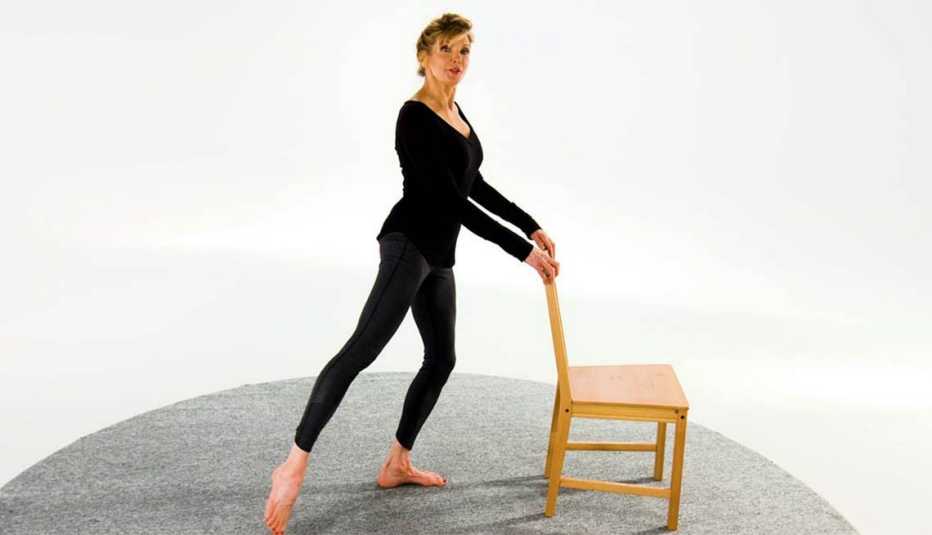Staying Fit


Want to boost flexibility and tone and strengthen the muscles in your arms, legs and core in a low-impact — and notably graceful —way? A barre workout could be for you — yes, you. After all, there's no leotard or serious dance skills required, and you get to do most of the moves holding on to a bar (barre) for support.


AARP Membership— $12 for your first year when you sign up for Automatic Renewal
Get instant access to members-only products and hundreds of discounts, a free second membership, and a subscription to AARP the Magazine.
Inspired by ballet dancers’ moves like the plié (when you bend your knees and straighten them again, with the feet turned out) and relevé (when you raise your feet and legs on the tips of your toes), barre classes, or the exercises based on them, can be done by all ages and fitness levels. And yes, they’re every bit as toning, and challenging, for men as for women.
"These are popular workouts because you lengthen and strengthen muscles using slow, controlled movements," says fitness guru Kathy Smith.
Barre workouts were first created by German dancer Lotte Berk back in 1959 in an effort to stay fit while healing from a back injury. They don’t focus on back muscles per se, but by strengthening core muscles and stressing proper form and alignment, their moves help to strengthen the back and improve posture.
What you’ll do in a barre workout: small, pulsing movements to the beat of music targeting leg, arm and core muscles. Often utilizing a dancer’s barre or handrail (a sturdy chair can sub in at home) for stability, barre classes offer that side of balance with a full menu of yoga, Pilates and, yes, dance moves. Exercise gear here is typically minimal and ranges from resistance bands to one- or two-pound weights to a simple mat and towel.
Barre workouts are also virtually non-impact, making them gentle on the joints. And because the moves strengthen muscles, they can help increase bone density. Of course, given all the different muscles these moves target — including your possibly underused glutes — you may be a little sore after your first, second or even third try. Stick with it, says Smith: "Once you get over the initial hump of soreness, which takes about two to three sessions, your added strength will lessen the stress on your muscles and joints."


































































More From AARP
7 Best Arm Workouts to Help You Get Stronger
This easy upper-body workout may help you feel (and look) stronger
7 Reasons Why Strength Training Is Key to a Long Life
In just one hour a week, you can change your health and increase your longevity8 Knee-Strengthening Exercises to Reduce Pain
Experts say ‘motion is lotion’ for achy or injured knees